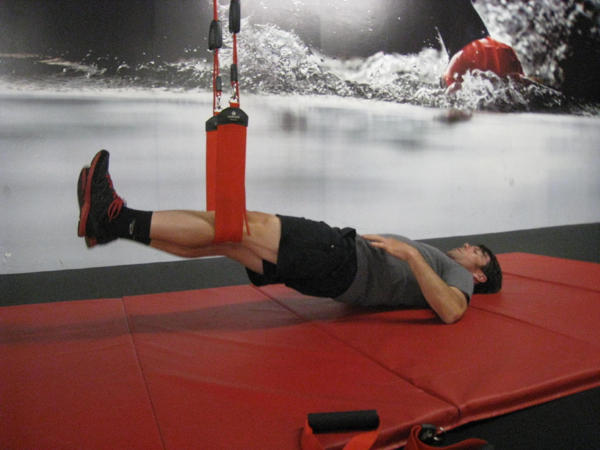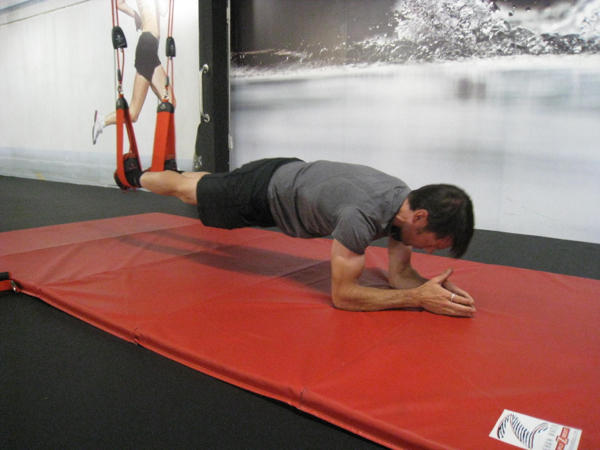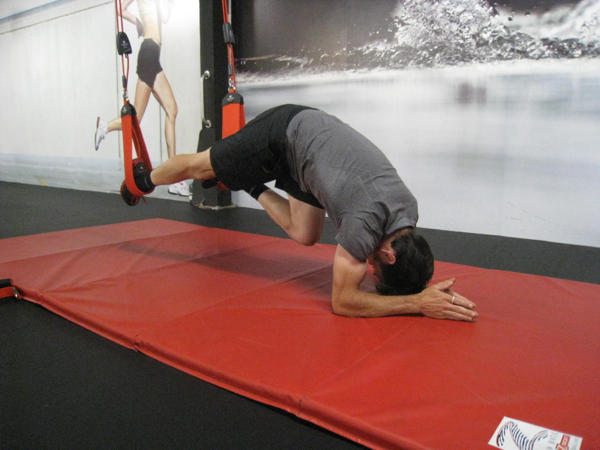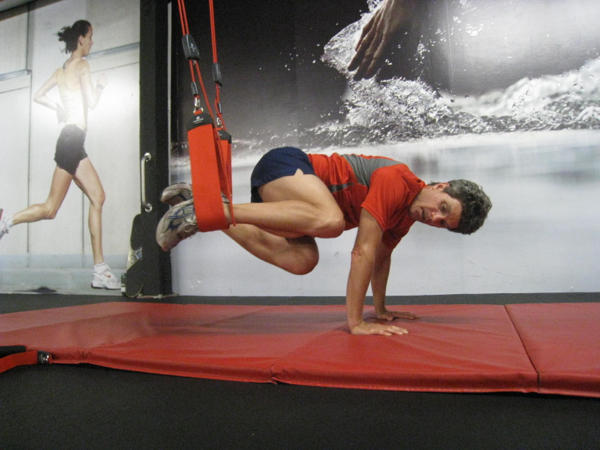If your training only includes riding, it’s impossible that you are getting the most out of your time on the bike.

If you ever have the good fortune to ride with me, the topic of “core strength” is likely to come up at least once. As the saying goes, “I’ve gotten religion about core fitness,” and I preach it to everyone with whom I ride. If you want to be your best on the bike, you need to do more than just ride.
In the mid 2000s I was doing at least one century ride a week, with a healthy dose of “epics” that included lots of climbing. I was getting in a ton of miles, but I could barely walk and getting out of a sitting position was excruciating: I had debilitating pain in my lower back, glutes and hamstrings. I was convinced I would be on cortisone shots for life.
Fortunately, I hooked up with an astute sports doc who prescribed physical therapy instead of drugs. As I slowly internalized the positive effects of the physical therapy, I started to look for similar workouts at the gym. About the same time, we relocated to Seattle and I got hooked up with some of the savviest cycling coaches in the Seattle area. I did a session with Beth Lyndon-Griffith who helped me lose the pain and develop some basic core stability. Later, I met the guys at Herriott Sports Performance (aka HSP) where I’ve been doing a medicine ball functional strength class tailored for cyclists for about five years now.
As a serious “recreational athlete,” the core fitness I’ve built during the past few years has given me better bike handling skills, helps me to climb better on the bike, and has also helped hone my telemark skiing skills. The debilitating pain I felt when I was only riding big miles is GONE. To be clear, core fitness is less about developing huge abs (though they do become well-defined), and more about developing the smaller, deeper stabilizing muscles in the body. An added bonus of this kind of training regimen is that it can help to minimize injury when accidents happen, and promotes recovery afterwards.

A “new” approach to “core” fitness, suspension training has recently become popular here in the US, although in researching this post I found references to similar practices going back to 1866, so variations of it have been around for at least 150+ years. The TRX system is the most widely adopted system here in the US, and a number of gyms around Seattle offer TRX-based suspension classes.

Redcord, founded in 1990, is a Norwegian incarnation of the suspension training apparatus and is being used in medical contexts, by professional athletes, and has recently been adopted by Herriott Sports Performance. Todd Herriott (CSCS) first learned about Redcord from BMC‘s European riders (he’s been a strength and conditioning consultant to the BMC Cycling team for the past 3 years), and has been doing training with Redcord USA for the past year.

Suspension training conditions the smaller, deeper stabilizing muscles in the body. Without constant attention, the deep stabilization system gradually loses tone and the neural connections to those areas diminish as well. It’s as though a dimming switch to those smaller, deeper stabilizing muscles gradually turns off the power over time. In response, the larger movement-specific muscles must over-work to protect or make-up of for the loss of stability. The loss of that neuromuscular tone and interconnections results in power loss, reduced range or motion, pain, and other ailments. Suspension training and other core/functional training methods are about cultivating muscle balance, symmetry, and stability as well as re-activating muscles that have become deactivated.

The Redcord approach includes an assessment protocol that the trainer can use to adapt the exercises to address specific problems. As Todd ran me through a basic Redcord workout, he pointed out ways to make each exercise easier or harder. If you have never done “core” training before you should mention your lack of experience to your trainer so they can adjust the exercises accordingly. And if you think you are a super-athlete don’t expect to kill it in a core conditioning class. Based on my experience I’d recommend that you start easy and add difficulty over time.

The Redcord experience:
Todd coached me through a series of 6 Redcord exercises. This kind of series is aimed at re-educating the body how to move in all three planes, and in fact for some of the exercises I had plenty of strength, but lacked the neuromuscular awareness to pull them off cleanly.

Although some critics point out that suspension training is better suited for folks who already have a core fitness base, Todd has adapted Redcord to work with 8 year olds, and says it can easily be integrated into any fitness program that also includes an aerobic component like running or cycling.

As I noted above, I’ve personally benefitted from improving my core stability and fitness, and I see suspension training as another tool in the fitness toolbox; having a versatile set of exercises to choose from keeps the training fresh and challenging. From a cycling coach’s perspective, Todd highlights the fact that “cycling is all about the transfer of force, and the best way to get that transfer going is to have an efficient kinetic chain that links your muscles and joints. By improving your efficiency you don’t waste energy on superfluous movements that don’t move the bike.” For the last several months Todd has been using Redcord as a pre-race warmup…and he has noticed improved (winning) results. Todd has also been using Redcord with many of HSP’s coaching clients who are getting great results.

Check Herriott Sports Performance’s class calendar for the new Redcord class, where you get the benefit of suspension training with cycling coaches.
More HSP:
The HSP Cycling Club will host its meet the team ride on Sept 15, 9:00AM at Logboom Park.
The legendary Rocket Ride, an off-season training ride with some of the fastest riders in the area, and hosted by Coach David “Rocket” Richter, starts the first Saturday in November.

